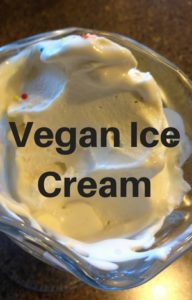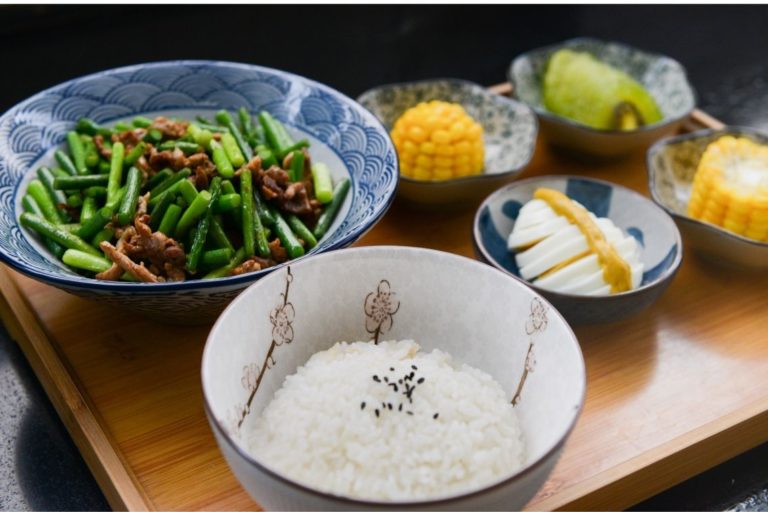Vegan Ice Cream
 If you love ice cream, but special dietary issues prevent you from buying or making regular dairy ice cream, you will be happy to know that delicious, vegan, gluten free ice cream is possible. This article offers information about the necessary elements you will need to incorporate into your vegan ice cream recipe to give you the best quality.
If you love ice cream, but special dietary issues prevent you from buying or making regular dairy ice cream, you will be happy to know that delicious, vegan, gluten free ice cream is possible. This article offers information about the necessary elements you will need to incorporate into your vegan ice cream recipe to give you the best quality.
What is top quality ice cream?
Taste and texture are the primary elements we look for in this frozen treat. Taste is, of course, primarily a result of the ingredients in the specific recipe we use. Chocolate? Strawberry? Peach? Etc. But taste is also influenced by the chemistry involved in making the base of your recipe. More on this later.
Texture is critical to the quality of the finished product. We want that rich, smooth, creaminess that we associate with top of the line ice cream. This, again, is dependent on the ingredients and chemistry involved in the process of making the ice cream. We want the finished product to feel smooth on the tongue. No graininess. This requires small ice crystals.
What are the specific elements?
Typical dairy ice cream is mostly cream and sugar, with a few additions to help with texture.
If we want to make a vegan ice cream, we need to use ingredients that perform the same functions as those used in dairy ice cream. Let’s take a look at each element and the function it performs.
Fat:
The butterfat in regular ice cream gives it that rich smooth texture that feels so good on the tongue. For our vegan ice cream, full fat coconut milk will work well. This is an organic brand that I like for smoothies and ice cream.
Sweetener:
The sugar in ice cream does more than add a sweet flavor. It improves the texture. By lowering the freezing point it helps to ensure that your ice cream doesn’t become a solid block of ice. For your vegan ice cream you can, of course, use plain sugar. But I know that very often, people who are following a vegan diet are also very careful about a variety of health concerns and may be avoiding cane sugar. You can use pure maple syrup, agave syrup, coconut sugar, or honey if you include that in your diet. Each of those options are available as pure, organic foods.
Air:
This is an important element for the volume and texture of your finished ice cream. The process of incorporating it into your product is part of that “chemistry” I mentioned earlier.
Emulsifier:
Egg yolk is the most common emulsifier in many of our foods – including ice creams. An emulsifier serves to hold the various ingredients together in a smooth base. For a vegan ice cream, lecithin can take the place of egg yolk. I like sunflower seed lecithin, since I try to avoid soy. I found this one on Amazon. It is organic and has NO additives. A ½ tsp would cost about 6 cents.
Stabilizer:
Gelatin is commonly used as a stabilizer, but it is an animal product. For a vegan recipe you can use arrowroot starch or agar agar. The stabilizer improves the structure and helps to prevent the formation of large ice crystals.
What about the process?
Now that we have covered the types of ingredients needed, let’s look at the process. There are 3 important steps. Each plays a role in contributing to the quality of your finished product. These steps would be the same for any type of ice cream – vegan or not.
Homogenization:
This breaks up the fat droplets and improves emulsion. Keeping the fat and water from separating allows the mixture to incorporate more air when you get to that part of the process. All of which makes for smoother ice cream. The homogenization process may vary by recipe. Often it will involve heating your mixture to make sure all the ingredients are thoroughly blended.
Aging:
Place your prepared mixture in the refrigerator for at least four hours – or even overnight. This accomplishes a couple of things. It chills it, which will lessen the time needed for the ice cream maker to do its job. But “aging” also improves the texture, smoothness, and stability. (The tiny fat droplets will partially solidify and their surfaces will be coated with protein.)
Freezing:
Once your mixture is well blended and aged, it is ready for the ice cream maker. The churning process incorporates that air element mentioned in the first section of this article.
Analyzing recipes
Use the above information to analyze recipes. You can find LOTS of recipes for vegan ice cream online. If you try a recipe that sounded good to you, but you are less than thrilled with the results, use this information to guide your adjustments. Does it need a stabilizer? Is it too grainy? Maybe it needs an emulsifier.
Check out my article about ice cream freezer burn for some tips on storing your ice cream to prevent the formation of large ice crystals.


